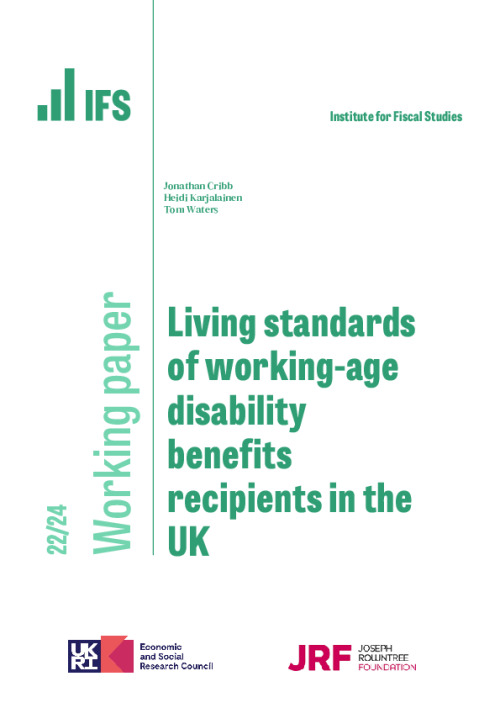We examine the living standards and health of working-age disabled people and disability benefits recipients over time in the UK. The UK’s disability benefits system (which is non-means-tested and in which receipt is unrelated to work status) has gone through a significant transformation since 2013 with the gradual replacement of the disability living allowance (DLA) with the personal independence payment (PIP). We establish four key facts. First, 6% of working-age individuals are now on disability benefits, up from 2% in 1992–93. This rise has been driven by claims for mental health and other psychiatric conditions, which are now the main disabling condition for 44% of claimants (27% back in 2002–03). Second, almost half of those in the most materially deprived tenth of the population are disabled, but most of that group do not receive disability benefits. Third, over the period that DLA has been replaced by PIP, a larger fraction of those with the poorest health have started to receive disability benefits, suggesting that the targeting of the benefits has improved on this margin. Fourth, simple event studies examining employment in the years around the reduction of disability benefits (following a government health reassessment) find no change before but a sharp (4 percentage point) rise immediately after loss of benefits, which grows to 10ppts four years after. This is not enough to offset the loss in income on average, and income poverty rises 10ppts in the year following the reduction. Nonetheless, we find limited evidence of claimants’ own assessment of their financial situation changing, suggesting that the benefits are removed at a time when they are less needed.











